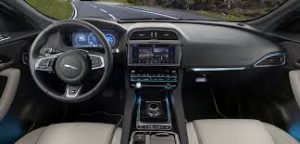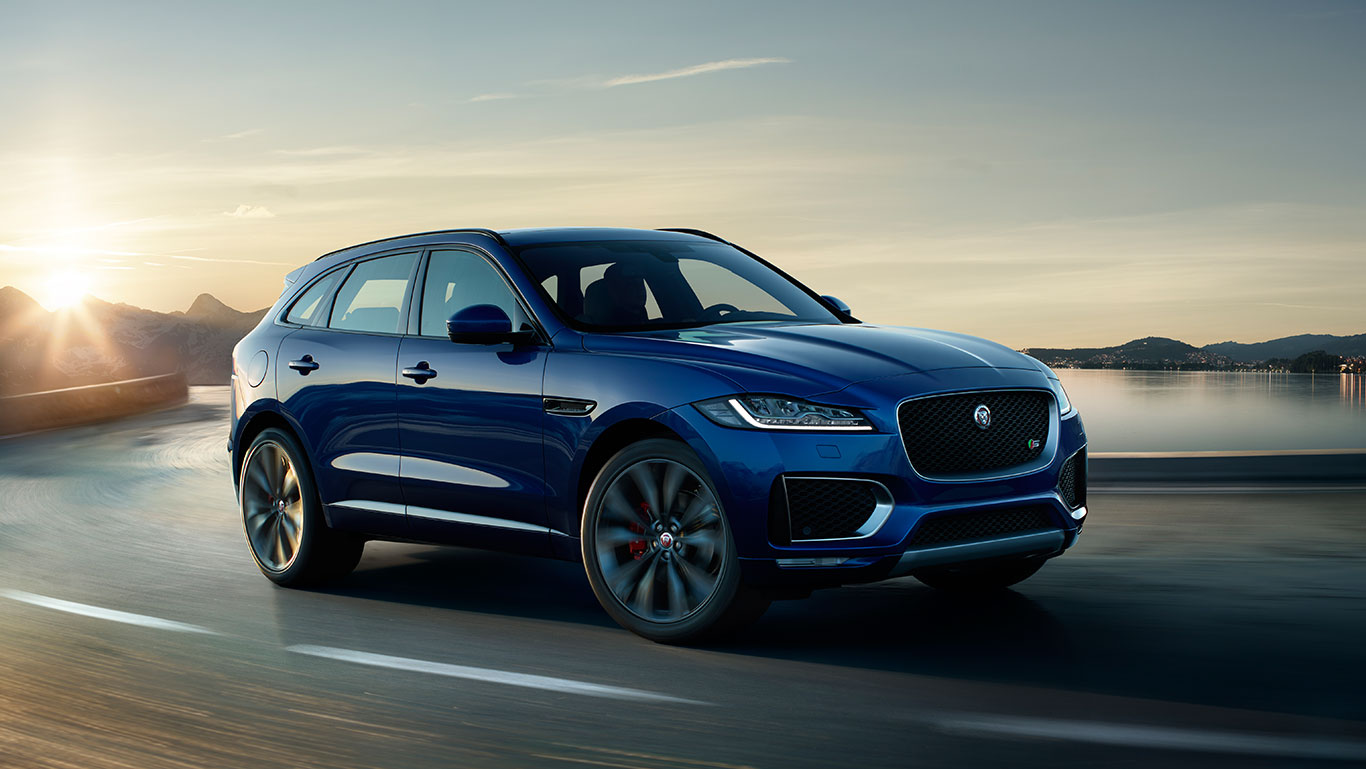By Shari Prymak
2017 Jaguar F-Pace - The F-Pace represents a new chapter in Jaguar’s lengthy history book. As the brand’s first SUV, it’s a break from the past, but also a reflection of the present. SUVs of all types are wildly popular. A trend which can even be seen within the JLR brand, where Land Rovers outsell Jaguars by a huge margin. The F-Pace is, without a doubt, a necessity. But can an SUV really be a true Jaguar?
The F-Pace certainly looks like a Jag. In fact, it may be one of the prettiest crossovers available today. The design elements that it shares with other Jaguar models translate very well onto the crossover shape. It’s elegant, but also athletic, managing to look leaner and smaller than it really is. In terms of size, it sits somewhere between a BMW X3 and X5, which makes it a useful size for most.
Unlike some other svelte-looking crossovers, the F-Pace doesn’t sacrifice any practicality to its design. Jaguar claims it has best-in-class interior measurements. Both the front and rear seats have plenty of room for adults, and the cargo area exceeds that of larger crossovers, such as the Porsche Cayenne and Lexus RX. The interior is also well-made and the controls are straightforward, but it certainly doesn’t look or feel as special as an F-Type or XJ. The narrow rear window also limits visibility.

One thing the F-Pace certainly does share with its siblings, however, is a thoroughly enjoyable and dynamic driving experience. My week with the F-Pace coincidently overlapped with a Jaguar event, “The Art of Performance Tour,” where the company let me push the crossover on a tight closed course back-to-back with an XE and F-Type. I was amazed with how well the F-Pace was able to hold its own against its more sporting siblings. In terms of both cornering and braking ability, it’s very impressive, but it’s the sonorous exhaust note and responsive, torque-rich, supercharged V6 engine that impress the most. It’s no F-Type for theatrics, but it’s still thoroughly enjoyable.
The V6 engine comes in two states of tune, 340 horsepower and 380 horsepower, both mated to a smooth-shifting ZF 8-speed automatic transmission and a rear-biased all-wheel drive system. My 380 horsepower test car averaged 14.0L/100km over a week of mixed city and highway driving, which isn’t great, but still respectable for large crossover with this level of power. For those who can forgo the power in exchange for better fuel economy, an efficient, 2.0L, 4-cylinder diesel engine is also available. The one fuel-saving feature that I’m not a fan of is Jaguar’s engine stop start system. It’s an irritating feature in most cars, but in JLR products, it’s unacceptably jerky and unrefined to the point where I turn it off at the start of each drive.
The F-Pace has a starting MSRP of $50,900, but can go as high as 80 grand for a well-optioned S model. A mid-range 35t model with a few key option packages can be had for an MSRP below 65 grand, which is where it strikes me as good value as far as luxury crossovers go. It would be an even better buy if Jaguar Canada would match the 5 year/100,000km comprehensive warranty that their American counterparts offer. That would go a long way to strengthen consumer trust in Jaguar build quality and reliability, something which, for many consumers, has always been questionable.
A break from Jaguar heritage or not, the F-Pace is a brilliant crossover. It’s as comfortable and spacious as a Lexus RX, as entertaining to drive as a Porsche Macan, more stylish than a BMW X5, with better pricing than any of them. Being the first and, currently, only SUV that Jaguar makes, it’s also more exclusive than most other crossovers, which, for many, is another appealing attribute. If consumers catch on to what a gem it is, however, that probably won’t be the case for long.

